
Having a basement in your home comes with many benefits. Extra storage space, recreational space that allows privacy, and an increased home value are just a few examples. However, if you ever lived in a home with a basement, you’re also familiar with the “basement smell” - that unpleasant, musty smell some people describe as earthy or similar to wet socks or a wet dog.
If you’ve lived with a musty basement for a long time, it’s easy to start thinking that it's just how basements smell. It’s true that the basement's underground location factors in the way it smells, but a basement doesn’t necessarily need to smell musty. And if your basement already does have that odor, there are several ways it can be turned around. All you need is to figure out the cause and know a few simple methods to fix it.
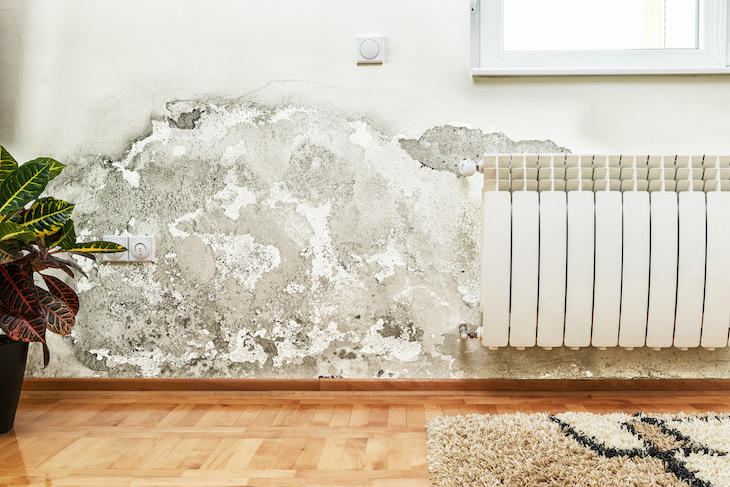
Mold and mildew are the most common culprits behind that musty basement smell. While many people use these two words interchangeably, mold and mildew are actually different. Mold is usually thicker and can sometimes even appear moss-like or fuzzy. It ranges from dark green to grey and black in color, and it is usually found in higher spots. By comparison, mildew is flat, brown to gray in color, and it eventually turns into a white powder. Both mold and mildew thrive in damp spaces, hence why they're so often found in basements.
Related: How to Banish Mold and Mildew from Your Home
Sewage lines often run through the basement before continuing outside. Liquid sewage spills from the pipes or improperly fitted pipes may be what’s omitting the odor.
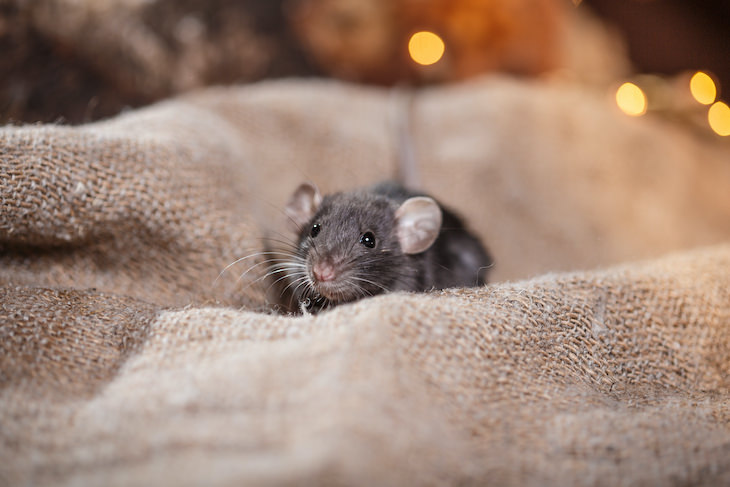
If you suspect that there are rodents in your basement, look for their droppings. Those look like dark grains of rice, and they too can contribute to the sour basement smell. If there are any droppings in your basement, it’s crucial that you find and remove them as soon as possible because rodent feces can spread diseases like hantavirus and salmonella.
Related: Rodent Alert: Ways You May Be Inviting Mice into Your Home
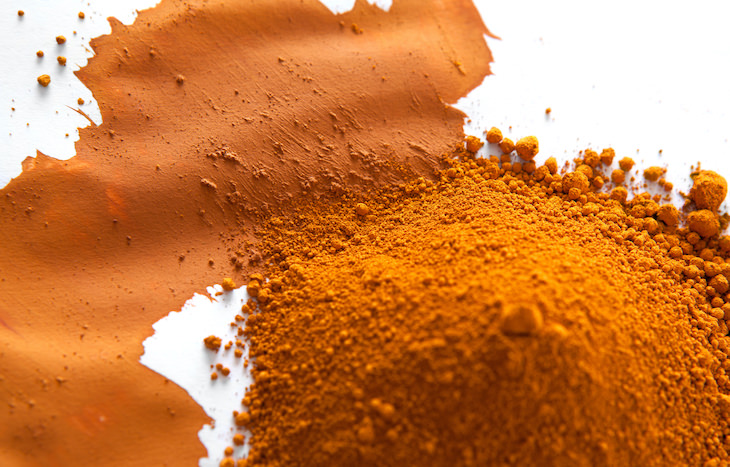
Iron ochre is a yellow-tan or red jelly-like substance typically found in drain outlets. When wet, iron ochre looks like brown mud. In fact, this material is a bacterium that feeds on iron and smells like rotten eggs.
Mold and mildew spores can start to multiply in as little as 24 hours. So to truly solve the problem, you must find the source of the humidity and eliminate it.

Two common and easily fixable problems are condensation dripping off a pipe and water leaking through a basement window. If you spot any “sweating” pipes, you can easily insulate them with foam pipe wrap. However, if the pipe is actually leaking and not just sweating, you might need to call a professional to repair it.
If your basement has windows, look for water running down the glass or puddling underneath the window when it rains. In the case that this is indeed the source of the problem, remove leaves and debris clogging the outside window wells. To prevent clogging in the future, you can fill the wells with gravel. Finally, seal any small leaks around the window frames.
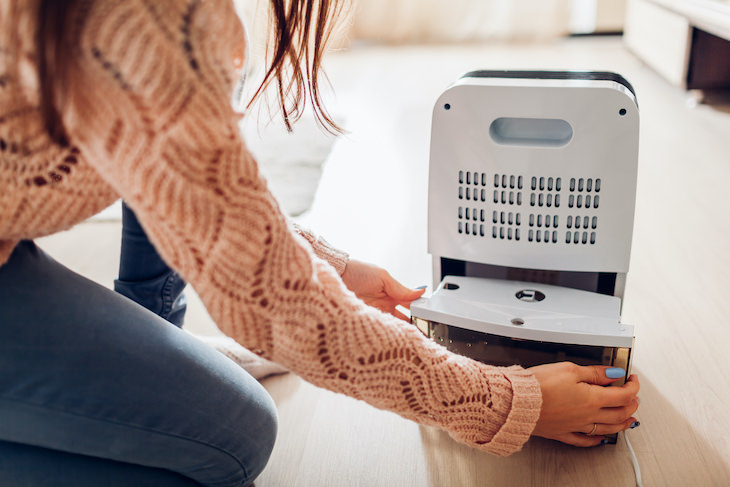
Since it's located underground, your basement tends to stay cooler than the rest of your home in summer. While that can be an obvious benefit, it can also pose a problem. When warmer air from upstairs makes its way into the basement, it rapidly starts to cool. As a result, water vapor condenses into a film of moisture that settles on the basement walls, as well as any furniture or other items stored in the space.
The ideal level of indoor humidity for most people is between 20 and 50 percent. Mold requires humidity of 60 percent or higher to grow. Test your basement level of humidity. To do so, you can either purchase a hygrometer or download a hygrometer app (click here for Android and here for iOS). If the basement is more humid than you’d like it to be, consider using a dehumidifier to make things more comfortable for you, and turn your basement into a less hospitable place for mold and mildew.
Before you begin the task of cleaning iron ochre, make sure to wear waterproof gloves. Use a putty knife to scrape away large portions of iron ochre slime and follow up with a rust remover. It is likely that you won’t be able to remove all of the color stains, but the majority of the odor-producing material will be gone.
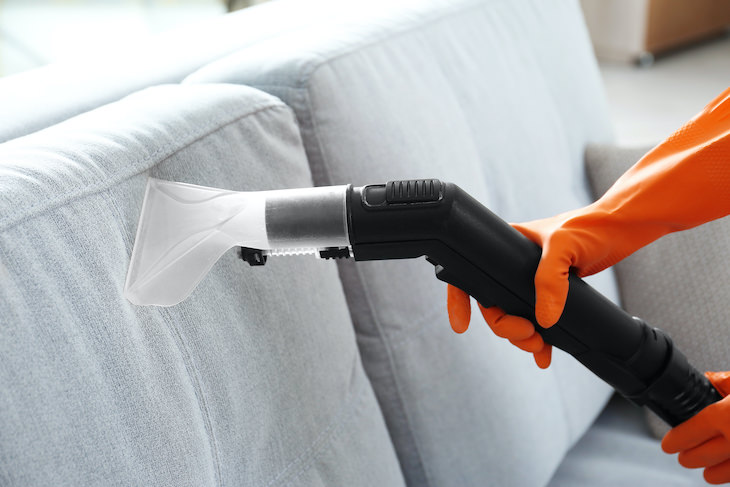
Once you have identified and took care of the source of humidity, it’s time to take a closer look at anything that might have been touched by it, especially upholstered furniture.
First, vacuum the piece, then wipe it down thoroughly with a clean sponge dipped in a solution of equal parts water and rubbing alcohol. Let it dry outside in a sunny spot for several hours. UV rays of direct sunlight kill mold spores.
Related: From Leather to Linen - How to Clean Every Type of Couch
You’ve done everything you needed to get rid of the odor-producing agent, but the musty smell still lingers? Don’t fret, there is a simple and effective remedy for that. Simply set out a few bowls of baking soda around the room. Baking soda absorbs and neutralizes odor molecules very well. If you happen to be out of baking soda, white vinegar could do the job just as well.
Share these tips with family and friends